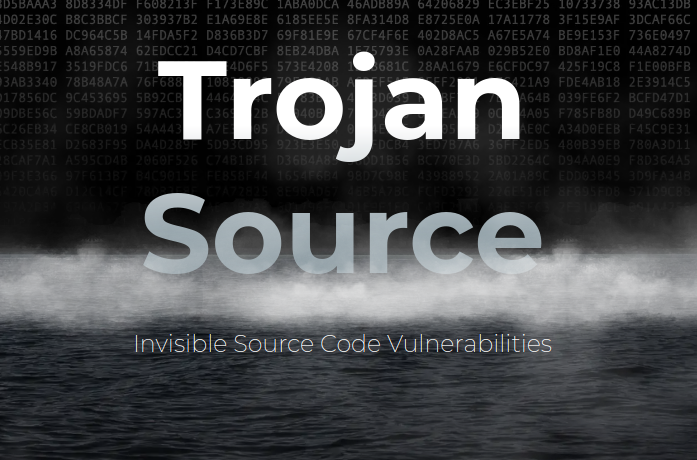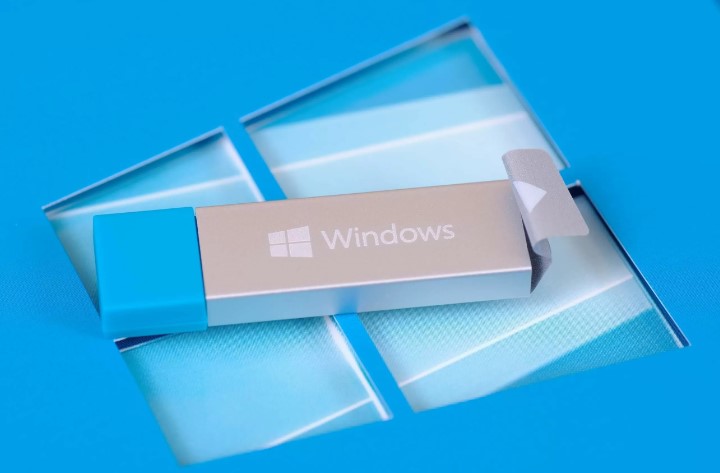These 3 Latina Teachers Are Pushing the Boundaries of Computer Science Class

In Megan Bowen’s high school robotics class, students made cardboard mazes, quizzed a local expert who brought live birds into her classroom, and decided how they should be graded, all before touching a computer.
Their goal was to collaboratively design a “bird vending machine” that used small microcontrollers to train crows to find loose coins in the surrounding neighborhoods of Salem, Mass., then deposit them in a slot in exchange for food.
“I’m very passionate about showing how computer science relates to things other than just coding,” said Bowen, who identifies as Hispanic-American and queer and originally studied to become an English teacher.
Such outside-the-box instruction is the fruit of a decades-long effort to widen the circle of educators and students taking part in K-12 computer science classes. The push has been supported by the National Science Foundation, a pioneering group of female academics, Presidents Obama and Trump, and a bipartisan group of governors, with a huge financial boost from Silicon Valley.
The “computer science for all” movement is shaping up to be a very impressive success story in 21st century public education, according to experts in the field.
“To put it simply, they are changing the face of what computing looks like,” said Yasmin Kafai, a learning scientist and professor at the University of Pennsylvania.
In the process, teachers like Bowen are also expanding the K-12 sector’s notions of what counts as “real” computer science. In a recent research paper, Kafai outlined how the field, once largely focused on workforce training, now also helps students use computing to explore their identities and express themselves creatively. Some teachers are also embracing what Kafai calls “critical” computer science, focused on examining how technology can work to either reinforce or challenge injustice.
Standards are still being written and revised. Curricula are being developed. Teacher-training programs are slowly adjusting.
But there’s plenty of excitement about the country’s diversifying computer science teaching force, which now includes a critical mass of Latina educators determined to make their mark.
Here are the stories of three.

Alicia Morris
Mendez High School
Los Angeles, Calif.
Sometimes, when Alicia Morris has trouble sleeping, she trains her thought on a seemingly intractable dilemma, like how to support life on Mars.
“What would I have to do first?” she asks. “How do I break this huge problem down into something more manageable?”
It’s a strategy that her students at Mendez High, nearly all of whom are Hispanic and poor, seem to appreciate.
“I have found more and more students going into computer science not because it’s lucrative, but because they really enjoy the process of approaching problems and solving them with technology, prototyping an idea, and learning how to be OK with not having a full solution but still making progress,” said Morris, who grew up in Colombia and the United States and identifies as Hispanic.
She first introduced computer science into her classroom in the early 2000s. While teaching math to 2nd graders, she began integrating projects that involved coding in the kid-friendly programming language Scratch. That helped convince her that all students deserved access to such experiences—which, in turn, shaped her studies when she went to UCLA to pursue a master’s degree in educational administration.
I have found more and more students going into computer science not because it’s lucrative, but because they really enjoy the process of approaching problems and solving them with technology, prototyping an idea, and learning how to be OK with not having a full solution but still making progress.
Alicia Morris, computer science teacher, Mendez High School in Los Angeles
At Mendez High, Morris ended up teaching one of the early iterations of Exploring Computer Science. The introductory class blends technical skills like HTML programming with a broad survey of the role of computing in society. It would go on to play an enormous role in attracting more girls, students of color, and students with disabilities into the field.
Morris’s experience deeply affected both her and her students.
“They were much more willing to take risks,” she said. “And I was a different kind of alive.”
As a teacher, she began leaning into the idea that her role was to assist in her students’ discovery. She also doubled down on the importance of relationships, starting every semester with interactive games and making a point to share classroom authority with her students, who are involved with even seemingly small decisions like where tissue boxes should be placed. Morris’s fluency in both English and Spanish and her own experience as an immigrant also helped build trust.
From that foundation, her students dove headfirst into a series of adventurous projects, including one in which they used a world-building design software called Twin Motion to imagine a more sustainable Los Angeles as part of a broader civic initiative called L.A. 2030.
Morris said she doesn’t tell her students what to think. But she does push them to wrestle with big ideas, like what it means to live in a society where money is becoming a digital abstraction. Such conversations have prompted students to reflect on what’s best for themselves versus what’s best for the general public, leading to a-ha moments about the ways in which power is increasingly concentrated in the hands of those who are comfortable navigating an increasingly digital world.
“How do you know you’re part of the digital divide if you don’t even understand it?” Morris said.

Megan Bowen
Salem Academy Charter School
Salem, Mass.
Megan Bowen has always loved technology. She’s also always loved being outdoors.
That’s why she now has the high school students in her 3-D Design class design, prototype, and print their own fishing lures, then test them at a local pond.
“Engagement has increased exponentially,” Bowen said. “I had 100 percent completion, 100 percent passing. And it’s primarily students of color, students with individualized education programs, and young women.”
She attributes her willingness to experiment with such nontraditional activities largely due to being named an Equity Fellow by the national Computer Science Teachers Association in 2020-21. The yearlong appointment helped her connect with other educators who shared her trepidation about not being a “real” programmer.
“For so long, because of the face of computer science, I felt like I didn’t belong,” Bowen said. “As a woman, as a queer woman, as a queer Hispanic woman.”
Her interest in equity and social justice dates back to her childhood outside Detroit. As a 6th grader, Bowen said, she petitioned her school’s principal to stop teachers from calling only on boys to carry things from one building to another.
At Grand Valley State University, she majored in English and minored in sociology while earning a certification in secondary education. Her first job was teaching digital literacy in the Grand Rapids, Mich., public schools. When that position was cut, she went back to school for a masters in instructional technology. She landed a job as an instructional technology specialist, helping teachers in another Michigan school district integrate digital tools into their classrooms. When that position was also cut, Bowen drifted away from education, finding a job developing employee training modules for a trucking company.
Engagement has increased exponentially. I had 100 percent completion, 100 percent passing. And it’s primarily students of color, students with individualized education programs, and young women.
Megan Bowen, computer science teacher, Salem Academy Charter School in Massachusetts
It was 2015 when she moved to Massachusetts. She started at Salem Academy, managing a schoolwide Chromebook implementation. She quickly moved into teaching courses on film and video, entrepreneurship, digital media, and workplace productivity tools—all of which she still thought of as “soft” computer science.
Amazon’s Future Engineer program changed that. Provided with a ready-made Advanced Placement Computer Science curriculum and plenty of hands-on training, Bowen was able to learn programming alongside her students.
“That’s where I went, ‘Maybe I can do this,’ ” she said.
The biggest change wasn’t becoming more comfortable with the Java programming language. Bowen also embraced how successful she’d been with her own approach to teaching. Her philosophy is to prioritize real-world projects and provide lots of on-ramps for marginalized students. She’s particularly committed to increasing the number of LGBTQ+ kids in computer science, saying their experiences and needs are often overlooked, especially if they also happen to be Black or brown or a woman or have special needs.
Sometimes, Bowen still feels like an imposter. And it’s not like her Mexican heritage and phenotypically white appearance allow her to automatically connect with her students, many of whom are Dominican and darker-skinned.
But during the recent “bird vending machine” project, Bowen’s willingness to learn to solder alongside her students helped spark the collaborative relationships she prizes.
“I definitely think of myself as part of a larger movement,” Bowen said. “My students have a broader sense of what computer science can look like.”

Mayné Gonzáles-Osorio
Jose E. Aponte De La Torre School
Carolina, Puerto Rico
Growing up in San Juan, Mayné Gonzáles-Osorio fell in love with digital photo editing, early online chat rooms, and popular video games like Mortal Kombat.
The skills she learned eventually helped lead to a job as a Medicare fraud investigator for a company called Computer Evidence Specialists, LLC. That, in turn, led her to become a leader in the effort to expand computer science education in Puerto Rico, starting around 2013.
“My story really starts with Dewey University calling me to teach computer science courses,” said Gonzáles, who identifies as Hispanic and Black.
She started offering courses in the programming languages like C++ and Code Composer Studio, as well as a class in design analysis. Before long, she was also writing curriculum for use in other schools and universities on the island. When energy began building to create a Puerto Rico chapter of the Computer Science Teachers Association, Gonzáles threw herself into the effort, eventually being named the group’s first president.
Technology is our life now. It’s in everything. It’s not just for a job. If my students can think computationally, they can resolve problems and make Puerto Rico better.
Mayné Gonzáles-Osorio, computer science teacher, Jose E. Aponte De La Torre School, Carolina, Puerto Rico
That was in 2017. Given the limited K-12 computer science offerings on the island, recruiting members was a challenge. So Gonzáles’s vision came to center around training teachers from other subjects to start integrating “computational thinking”—a problem-solving approach based on understanding and expressing potential solutions in a language that computers can understand—into their classrooms.
“The very first workshop we ran was called Scratch for Teachers,” Gonzáles said. “Teachers who had no computer science experience learned to translate programming languages and really understand the Scratch platform.”
Soon enough, they were also receiving training to build their own websites and program in Python, a newer programming language used for everything from building software to doing complex data analysis. Gonzáles also began working in an after-school program at the Jose E. Aponte De La Torre School, where she still teaches Python, game design, and mobile programming to middle and high school students.
There are still plenty of institutional hurdles. Many of the ready-made curricular materials are English-only. So are most professional computer science education conferences. Gonzáles would also like to see more of Puerto Rico’s colleges offer computer-science certificates to aspiring educators.
But now she’s a CSTA Equity Fellow, too. And watching her students walk out of De La Torre having created video games or apps that their friends and siblings want to play fills Gonzáles with hope.
“Technology is our life now. It’s in everything,” she said. “It’s not just for a job. If my students can think computationally, they can resolve problems and make Puerto Rico better.”









